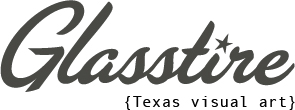Vincent Valdez: Just a Dream… at the Contemporary Arts Museum Houston, November 15, 2024 – March 23, 2025
The Contemporary Arts Museum Houston presents Vincent Valdez: Just a Dream, a career-spanning survey that encapsulates 25 years of this Houston and Los Angeles-based artist’s incisive practice. Known for his monumental figurative paintings, Valdez’s luminous works explore the intersections of personal memory, political commentary, and social critique.
Valdez’s portraits exude masterful chiaroscuro, illuminating figures often marked by weariness or resilience. A recurring motif is the stupefied boxer, a figure emblematic of perseverance and vulnerability, portrayed in moments of exhaustion or reflection. These portraits feel deeply personal yet inherently political, presenting everyday individuals as resilient and formidable.
Another series, Since 1977, portrays U.S. presidents in muted lithographic crayon, emphasizing their anonymity by depicting only their eyes downward. The vacant space left for the incoming president after Trump’s first term adds a layer of tension and uncertainty, reflecting the evasiveness Valdez attributes to political leadership.
The exhibition also features Valdez’s monumental works, including The Beginning is Near (An American Trilogy) Chapter One: The City I. This sprawling multi-panel painting critiques systemic inequalities with stark, low-light contrasts and atmospheric tension. Nearby, non-figurative works like It Was Never Yours (2019), a haunting depiction of black bricks against a diffuse sun, provide a quieter but equally resonant counterpoint to his figurative narratives.
CAMH’s commission of a new multimedia homage to Joe Campos Torres, co-created with Adriana Corral, anchors the exhibition in its Houston setting, confronting the legacy of police brutality and systemic injustice with unflinching clarity.
Through luminous technique and unrelenting sociopolitical inquiry, Just a Dream asserts Vincent Valdez as a chronicler of American identity, urging viewers to confront the unspoken and envision paths toward justice.
****
Richard Rezac: Abridged at James Harris Gallery, January 2 – February 22, 2025
Richard Rezac’s Abridged, now on view in Dallas, offers a distilled exploration of the artist’s sculptural practice, featuring seven sculptures and three preparatory drawings spanning over a decade of his career. Known for his meticulous process and reverence for materiality, Rezac’s works embody a quiet tension between modernist simplicity and intricate craftsmanship.
Each sculpture begins as a drawing, which serves as both a conceptual and formal blueprint. The transition from paper to physical form underscores the artist’s deep engagement with the properties of his chosen materials — ranging from painted cherry wood and aluminum to nickel-plated bronze. The works are fabricated with remarkable precision, much of it by hand, including elements like hydrocal casts and lost-wax metal forms. The addition of Dutch Lac, a high-gloss organic oil paint, lends a tactile finish that amplifies both color and form.
The sculptures’ intimate scale and their deliberate placement in the gallery’s architectural space invite close engagement. Each angle reveals subtle shifts in form, emphasizing Rezac’s exploration of symmetry, balance, and surface contrast. Works like Untitled (16-09), with its interplay of cherry wood, aluminum, and cast bronze, exemplify the artist’s ability to layer rational structures with symbolic resonance, creating pieces that are as conceptual as they are physically compelling.
With Abridged, Rezac bridges four decades of sculptural inquiry, offering Dallas viewers an opportunity to experience the quiet brilliance of his craft — a delicate interplay of hand-carved precision, material transformation, and modernist sensibility.
****
New Paintings by Erika Jaeggli at Giant Runt, Fort Worth, February 1 – March 15, 2025
Erika Jaeggli’s latest paintings continue her exploration of shapelessness, shifting from last spring’s encaustic textures to a flatter, more atmospheric approach. Muted mauves and pinks, encapsulated in black, form cavernous shapes that recall the bulbous forms of Forrest Bess — unexpectedly persistent throughout the series.
Jaeggli describes these works as bodily yet resists calling them humanistic. Scientific language of caves suggests anatomical parallels, though the paintings function as both landscapes and interiors, conflating the two. She likens them to the “guts of a cave,” an evocative phrase that reinforces their organic, internal quality.
Without over-explanation, the paintings assert themselves, avoiding the overdetermined symbolism often found in contemporary critiques of physicality. The Exit series stands out — funnels of light that distill the transition from brightness to shadow, offering a quiet counterpoint to the surrounding color-drenched compositions.
****
William Sarradet is the Assistant Editor for Glasstire.






